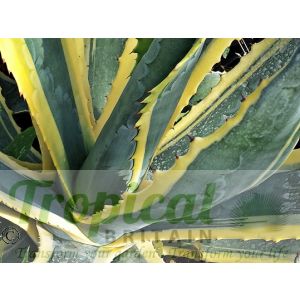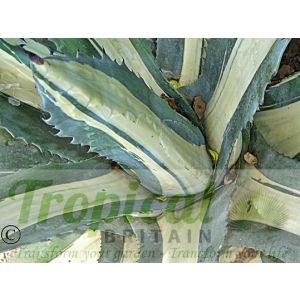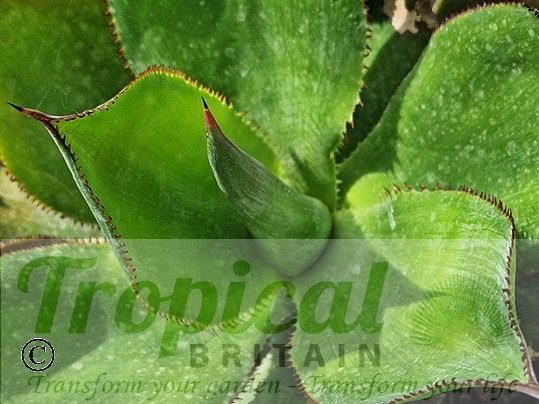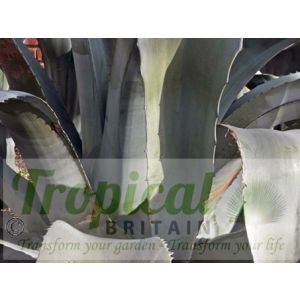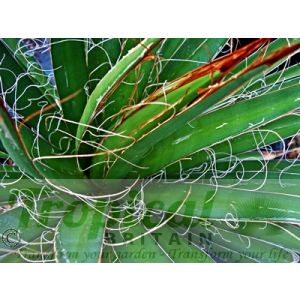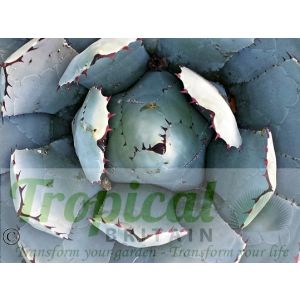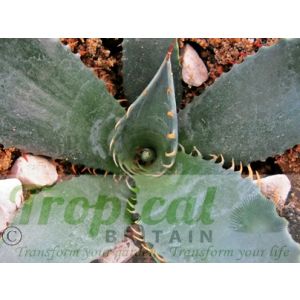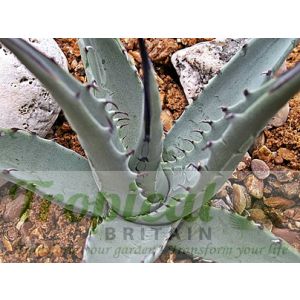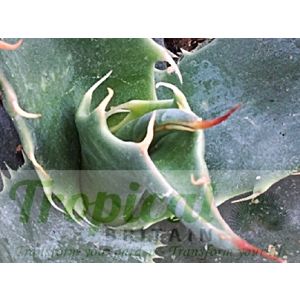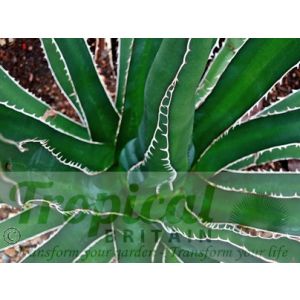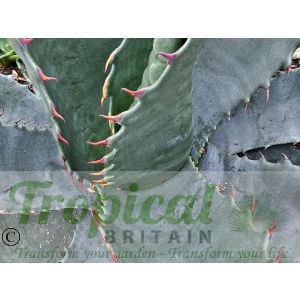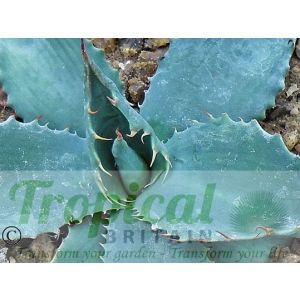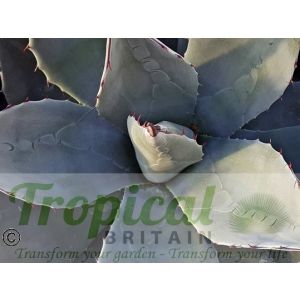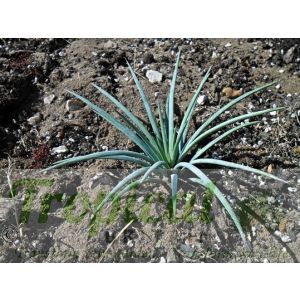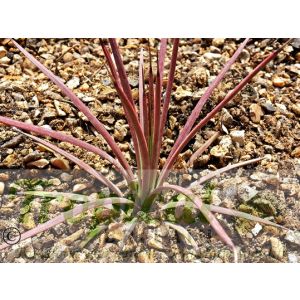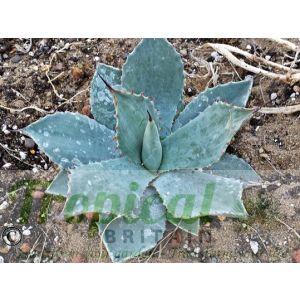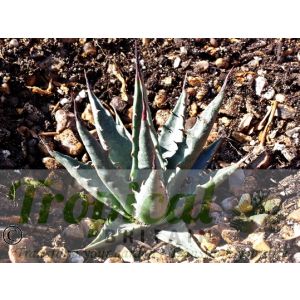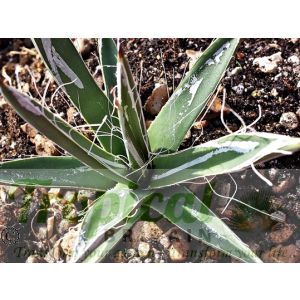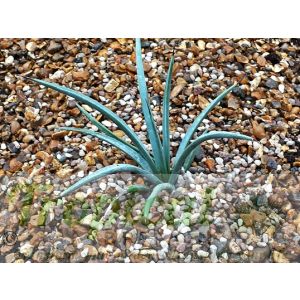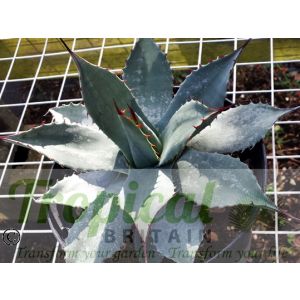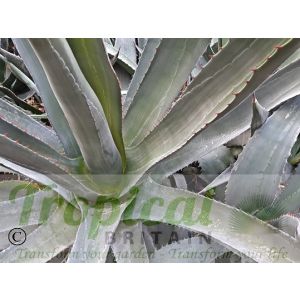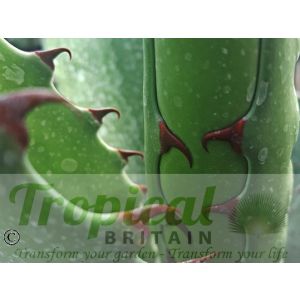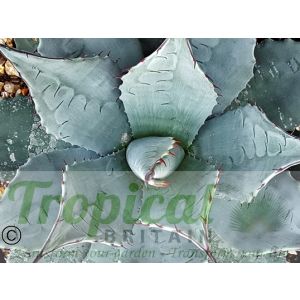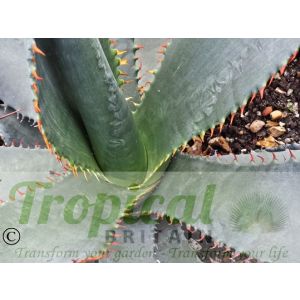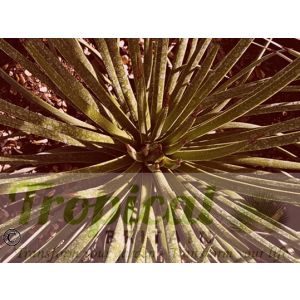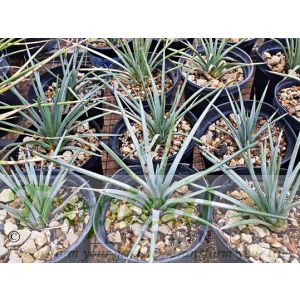Agave gomezpompae
- Rainforest/cloudforest Agave with finely toothed margins
- Prefers humid atmosphere and well-watered
- Free-draining alkaline substrate
- Tender
Agave gomezpompae is a rare, recently discovered, non-monocarpic Agave from the rainforests of central Veracruz in eastern Mexico. It is found on karst limestone hills in humid tropical forests northeast of Cordoba at elevations of 850m and further southeast, around Zongolica, in cloudforest at elevations of 1400m, again on alkaline calcareous rockfaces. It is polycarpic and its inflorescence is produced laterally. It forms a long thin ligneous stem not unlike Agave pendula to which it is closely related. The stem bifurcates as it grows. This is an unusual Agave! It is smaller and less robust in stature than Agave attenuata and its stem is less stout. The leaves are very finely denticulate, fleshy and with a small terminal spine. This foliage is also much loved by snails so some thought must be given to its position if placed outside during the summer. We have found it tolerates full sun like a desert Agave but it prefers semishade and higher moisture. Grown in the sun, the foliage becomes more upright, more fleshy and more brittle and less elongated and soft than when it is grown in the shade.
Agave gomezpompae is obviously not a hardy species outside in the UK and must be kept frost free. Indoors in a warm humid atmosphere is ideal. At the nursery we keep ours in an unheated glasshouse but under at least two layers of fleece. Protected like this it tolerates the cold well enough through to the spring. In colder regions, it would be sensible to be extra cautious.
Rare, unusual and available only in very limited quantities. We recently sold three of these to RHS Wisley which we believe are the first to make their way into a UK public collection.
Additional Information
| Order | Asparagales |
|---|---|
| Family | Asparagaceae |
| Sub-Family | Agavoideae |
| Geographical Origin | Mexico: Veracruz |
| Cultivation | Requires a humid moist atmosphere unlike desert Agaves. Free-draining alkaline substrate. Keep well watered with less water during the winter with its low light levels. Tolerates full sun but semi-shade is best. Foliage can be very brittle - be careful! |
| Eventual Height | 60cm |
| Eventual Spread | 80cm |
| Hardiness | Not hardy in the UK. Indoors in a conservatory or humid room. We have had these in unheated glasshouses (Surrey) under a double layer of fleece through winters and they have been fine but caution and extra layers are advised |

Free DELIVERY
ON ALL ORDERS OVER £99THIS OFFER IS VALID ON ALL OUR STORE ITEMS.
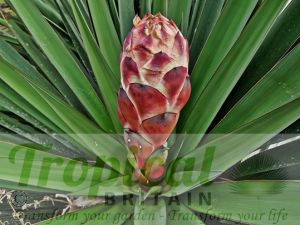
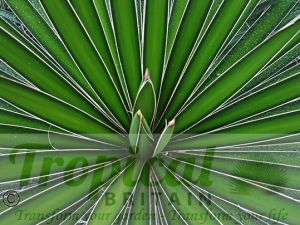
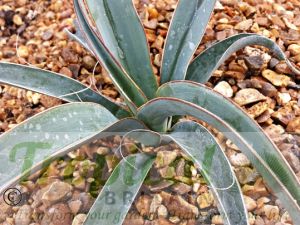
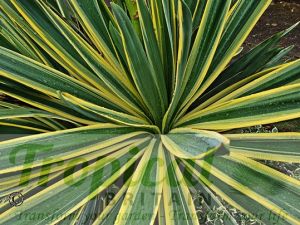
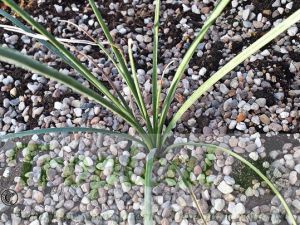
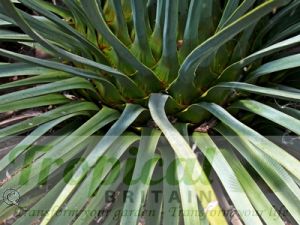
THE PLANTS
- Smaller-Growing Succulents
- Aeonium
- Agave
- Agave americana
- Agave amica
- Agave chrysantha
- Agave cupreata
- Agave deserti
- Agave filifera
- Agave gentryi
- Agave gomezpompae
- Agave havardiana
- Agave horrida ssp horrida
- Agave lechuguilla
- Agave mitis var mitis
- Agave montana
- Agave palmeri
- Agave parryi
- Agave polianthiflora
- Agave striata
- Agave stricta Rubra
- Agave toumeyana
- Agave univittata
- Agave utahensis
- Agave victoriae-reginae - Huasteca Canyon
- Aloe
- Beschorneria
- Bryophyllum
- Dasylirion
- Furcraea
- Hesperaloe
- Hesperoyucca
- Nolina
- Yucca
- Astrophytum
- Austrocylindropuntia
- Brasiliopuntia brasiliensis
- Cereus
- Chamaecereus silvestrii
- Cleistocactus
- Cumulopuntia
- Cylindropuntia
- Echinocereus
- Echinopsis
- Epiphyllum
- Ferocactus
- Gymnocalycium
- Hatiora
- Kroenleinia grusonii
- Lophocereus
- Maihuenia
- Mammillaria
- Matucana
- Myrtillocactus geometrizans
- Opuntia
- Opuntia arenaria SB964
- Opuntia atrispina
- Opuntia basilaris
- Opuntia chisosensis SB992 Brewster Co, TX
- Opuntia cymochila - Brewster Co, TX
- Opuntia engelmannii var. sandia
- Opuntia erinacea
- Opuntia fragilis
- Opuntia humifusa
- Opuntia lindheimeri - Beeville, TX
- Opuntia phaeacantha
- Opuntia pottsii var. nova DJF1441 SW Albuquerque, NM
- Opuntia robusta
- Opuntia sandiana
- Opuntia sanguinicola
- Opuntia stricta
- Opuntia strigil
- Opuntia trichophora
- Oroya peruviana
- Parodia
- Polaskia
- Rhipsalis
- Schlumbergera
- Stenocactus
- Stetsonia
- Tephrocactus
- Alocasia
- Amorphophallus
- Arisaema
- Arum
- Calla
- Caladium
- Colocasia
- Dracunculus
- Monstera
- Helicodiceros muscivorus
- Philodendron
- Pinellia
- Remusatia
- Sauromatum
- Spathantheum
- Typhonium
- Xanthosoma
- Zantedeschia
